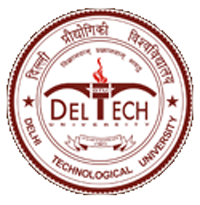Please use this identifier to cite or link to this item:
http://dspace.dtu.ac.in:8080/jspui/handle/repository/21810| Title: | QUATERNION FRAMEWORK FOR LOW-LIGHT IMAGE ENHANCEMENT |
| Authors: | ACHARJEE, SUDEEP KUMAR |
| Keywords: | QUATERNION FRAMEWORK LOW-LIGHT IMAGE ENHANCEMENT LPIPS |
| Issue Date: | May-2025 |
| Series/Report no.: | TD-8021; |
| Abstract: | Images captured at night affected by various degradation such as color distortion, low contrast, and noise. Many existing methods improve low-light images may sometimes am plify noise, causes color distortion, and lack finer details. The existing methods require larger number of parameters, which limits the adoption of these method in vision-based applications. In this thesis, we proposed a QLight-Net method to achieve a better en hancement with a comparably lower number of parameters. We proposed a novel method based on quaternion number representation utilizing a quaternion-based convolutional layer and introducing quaternion based depth-wise convolution, and quaternion cross at tention to develop the two-branch architecture to enhance the input low-light images in this thesis. The proposed dual branch model leverages gradient branch to extract color aware gradient features from the training images, and it uses color branch to extract gradient-aware color features. The dual branch architecture inspired from the U-Net ar chitecture incorporates residual connections in the respective encoder and decoder blocks. The branch leverages the knowledge and learning from the opposite branch throughout the model by sharing cross information sharing methodology after each layer of encoder and decoder. The proposed model achieve LPIPS score of 0.048, which surpasses the pre vious best results and parameter count of 0.7 million with 0.8804 and 28.05 scores of SSIM and PSNR, respectively in LOLv1 dataset. Our approach attains a balance between the computational efficiency and high-quality enhancement, providing improved results with out the computational cost of previous state-of-the-art models while trained on LOLv-1 dataset. The results are compared with 18 existing low-light image enhancement models each contributing unique methods to enhancement and shows that it outperforms many quantitatively. |
| URI: | http://dspace.dtu.ac.in:8080/jspui/handle/repository/21810 |
| Appears in Collections: | M.E./M.Tech. Computer Engineering |
Files in This Item:
| File | Description | Size | Format | |
|---|---|---|---|---|
| SUDEEP KUMAR ACHARJEE M.Tech.pdf | 18.82 MB | Adobe PDF | View/Open |
Items in DSpace are protected by copyright, with all rights reserved, unless otherwise indicated.



